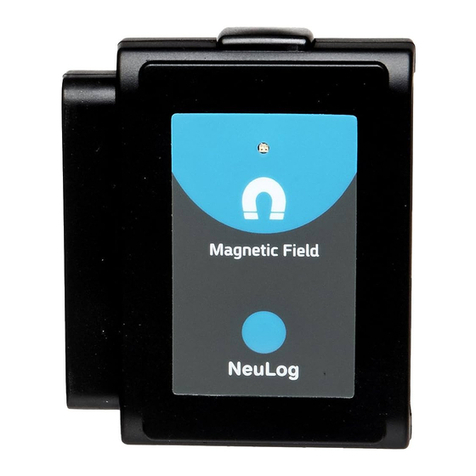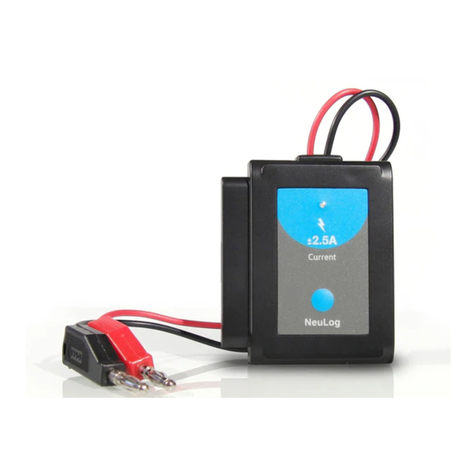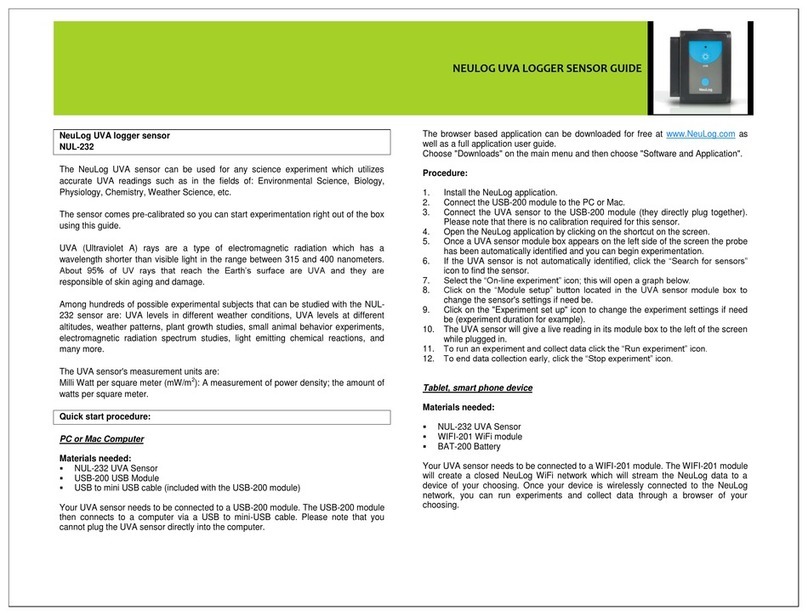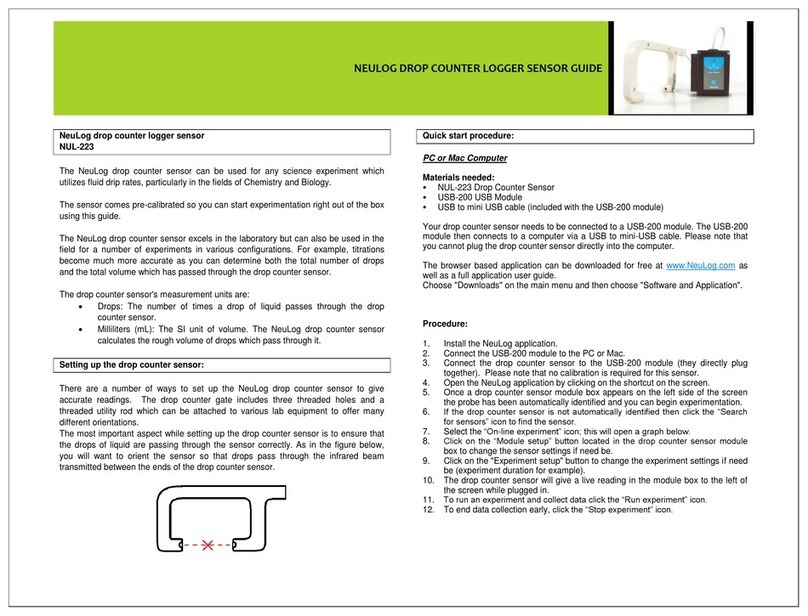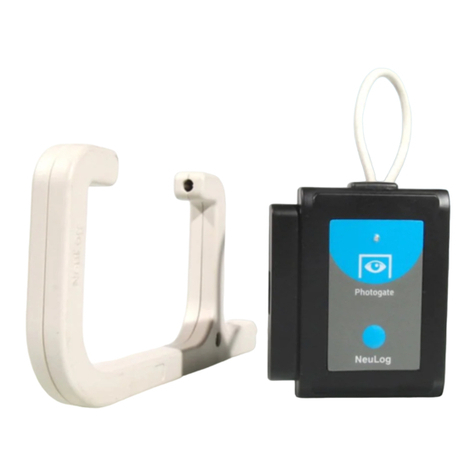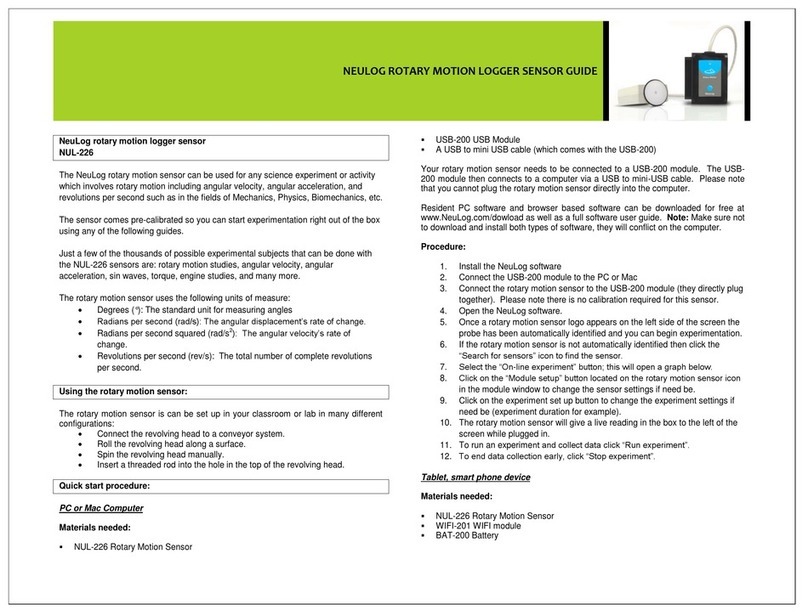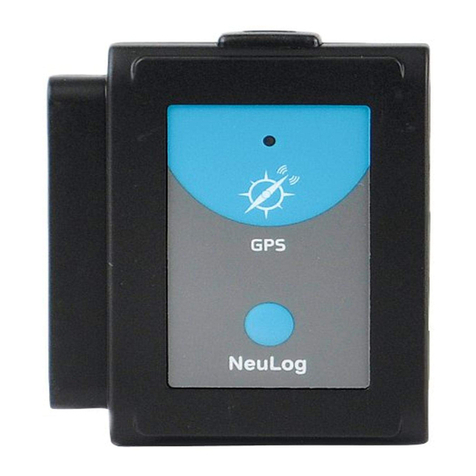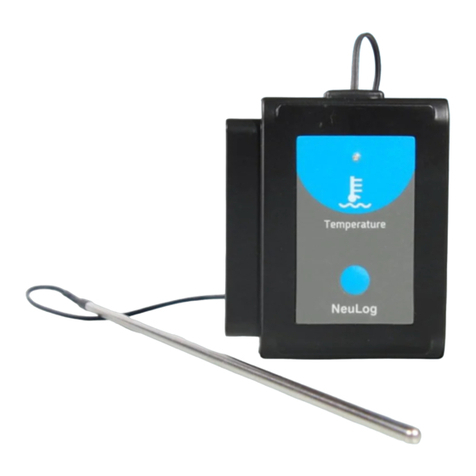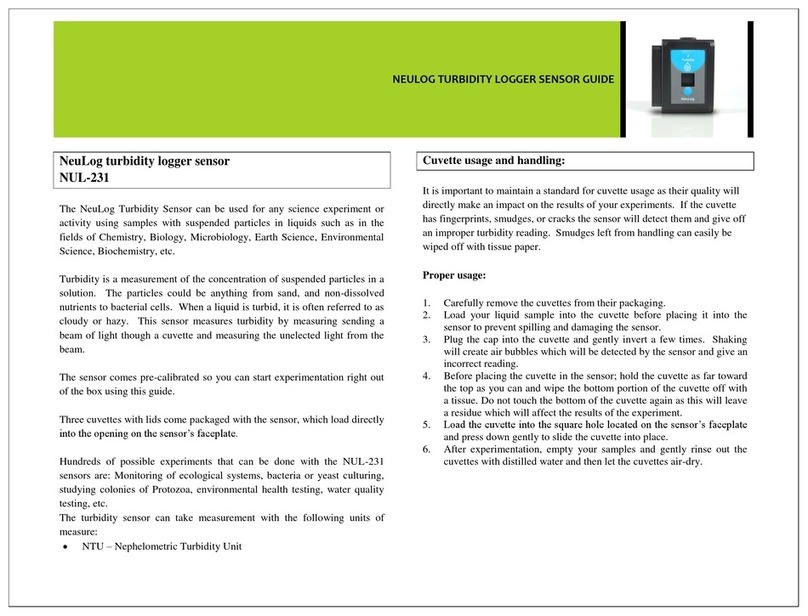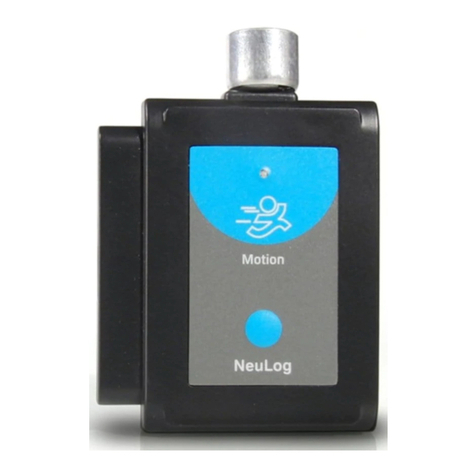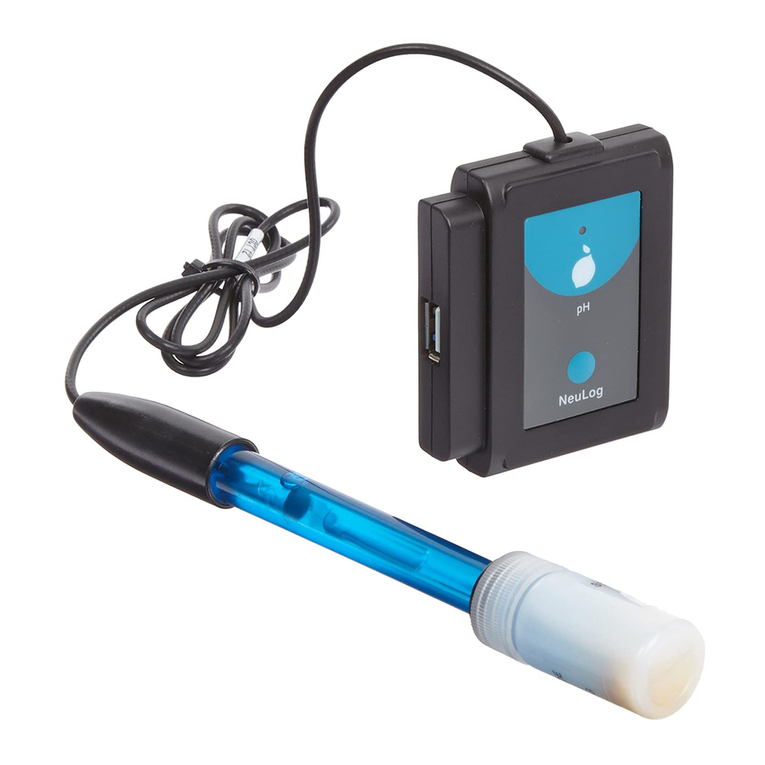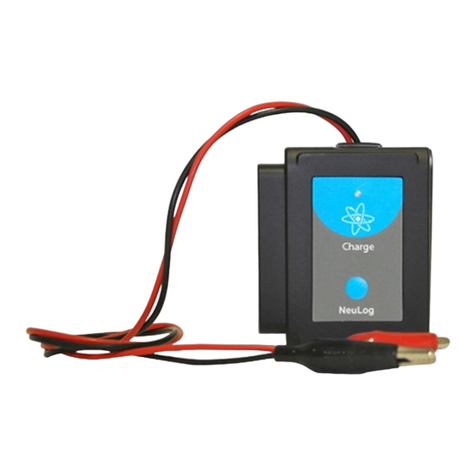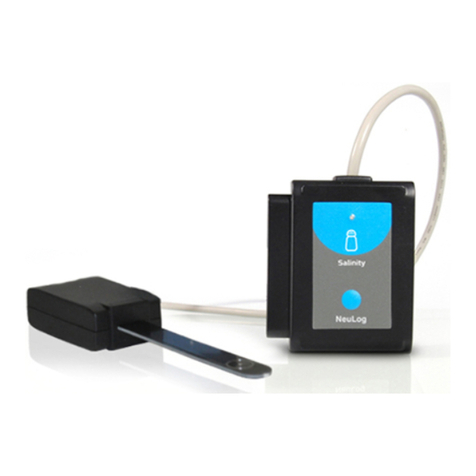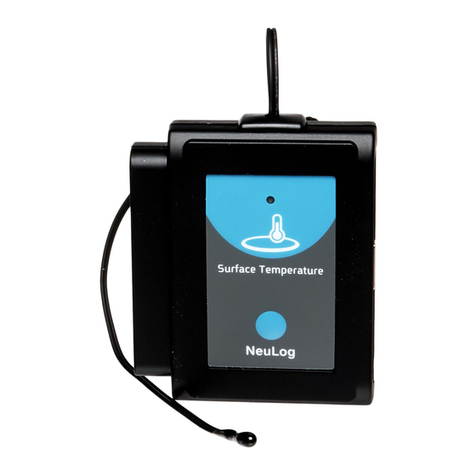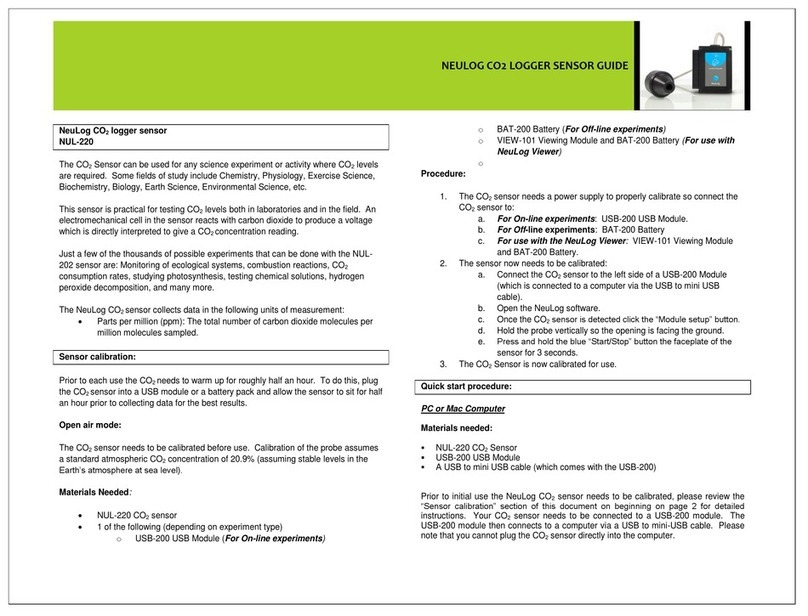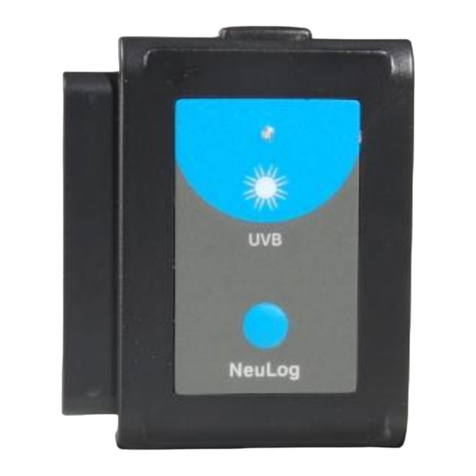
NEULOG PULSE SENSOR GUIDE
NeuLog Heart rate and pulse logger sensor
NUL-208
The NeuLog pulse sensor can be used for any science experiment or activity which
requires a human heart rate or pulse such as in the fields of Biology, Health Sciences,
Physiology, Exercise Science, Psychophysiology, etc.
The sensor comes pre-calibrated so you can start experimentation right out of the box
using any of the following guides. Heart rate can be measured in two ways with this
sensor: in beats per minute or in analog arbitrary values to demonstrate the wave
signal of a heartbeat showing the blood volume in the finger or earlobe.
Just a few of the thousands of possible experiments that can be done with the NUL-
208 sensors are: physiological experimentation, relationship between heart rate and
oxygen flow, blood volume, psychological experiments which utilize heart rates, lie
detection, exercise experiments, VO2 max experiments, metabolism, and many more.
The heart rate and pulse sensor has two possible units of measurement:
Beats per minute: The amount of heart beats per minute
Arbitrary analog units: An arbitrary unit meant to show wave functions.
Probe usage:
The pulse probe uses plethysmograph based electrodes to record changes in blood
volume/flow. The sensor consists of an infrared LED transmitter and a matched
infrared phototransistor receiver.
For best results:
Wash hands before use.
Clip sensor to a fingertip or an earlobe.
Remain as still as possible until testing is complete
Nail polish can skew the results.
Let signal stabilize before reading.
Quick start procedure:
PC or Mac Computer
Materials needed:
NUL-208 Heart Rate and Pulse Sensor
USB-200 USB Module
A USB to mini USB cable (which comes with the USB-200)
Your heart rate and pulse sensor needs to be connected to a USB-200 module. The
USB-200 module then connects to a computer via a USB to mini-USB cable. Please
note that you cannot plug the heart rate and pulse sensor directly into the computer.
Resident PC software and browser based software can be downloaded for free at
www.NeuLog.com/dowload as well as a full software user guide. Note: Make sure not
to download and install both types of software they will conflict on the computer.
Procedure:
1. Install the NeuLog software
2. Connect the USB-200 module to the PC or Mac
3. Connect the heart rate and pulse sensor to the USB-200 module (they
directly plug together). Please note there is no calibration required for this
sensor.
4. Open the NeuLog software.
5. Once a heart rate and pulse sensor logo appears on the left side of the
screen the probe has been automatically identified and you can begin
experimentation.
6. If the heart rate and pulse sensor is not automatically identified then click
the “Search for sensors” icon to find the sensor.
7. Select the “On-line experiment” button; this will open a graph below.
8. Click on the “Module setup” button located on the heart rate and pulse
sensor icon in the module window to change the sensor settings if need be.
9. Click on the experiment set up button to change the experiment settings if
need be (experiment duration for example).
10. The heart rate and pulse sensor will give a live reading in the box to the left
of the screen while plugged in.
11. To run an experiment and collect data click “Run experiment”.
